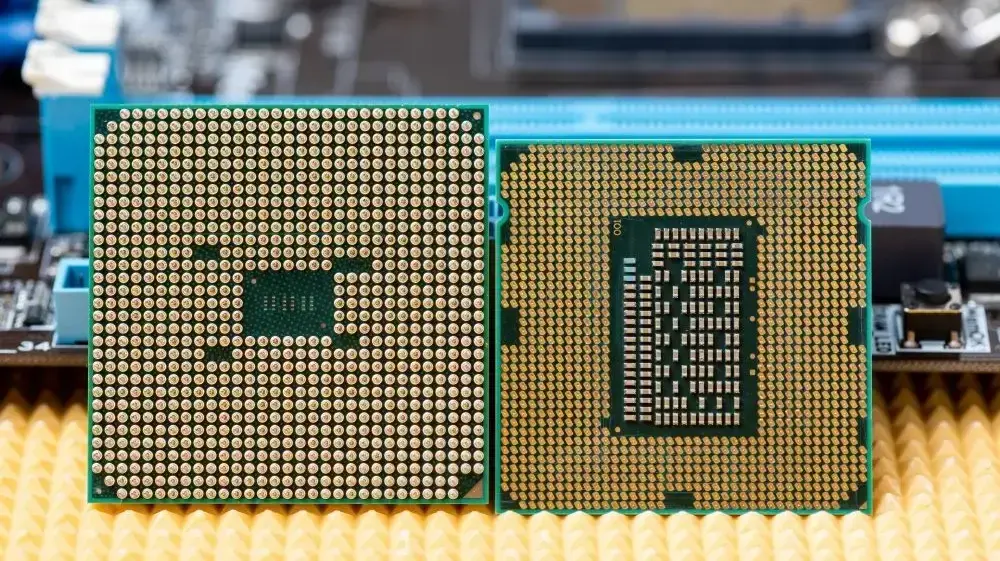Two key components often come up in discussions of a computer's inner workings: the CPU (Central Processing Unit) and the GPU (Graphics Processing Unit). These two pieces of hardware play important but distinct roles in powering a computer's basic tasks.
The CPU, often referred to as the “brain” of the computer, handles a wide range of general-purpose tasks that keep your system running smoothly. On the other hand, the GPU is specifically designed to handle intensive, specialized tasks, particularly those requiring parallel processing, such as rendering complex graphics or training machine learning models.
Understanding their differences is key to choosing the right hardware for tasks like gaming, video editing, or AI development.
What is a CPU?
The CPU is responsible for executing instructions, managing system operations, and processing data to ensure your device runs smoothly. It handles tasks such as running applications, processing user commands, and coordinating system activities.
Below are some of its defining features:
High performance: CPUs typically have fewer cores compared to GPUs but are designed for powerful, sequential processing. Each core can handle complex tasks independently, making them highly efficient for a wide range of operations.
Optimized for general-purpose tasks: The CPU excels in managing diverse workloads, from running the operating system to supporting applications like word processors, web browsers, and media players.
Versatility: CPUs are capable of switching between tasks quickly, making them ideal for multitasking environments where different types of computations are needed simultaneously.
What is a GPU?
A GPU is a specialized hardware component designed to handle tasks that require high-speed parallel processing.
While originally developed to accelerate the rendering of images, videos, and animations, modern GPUs have evolved to support a wide range of computationally intensive tasks beyond graphics. They are now primarily responsible for rendering visuals, making them an essential component for gaming, 3D modeling, and video playback.
GPUs are designed to excel in specific tasks by leveraging their unique architecture:
1. Optimized for parallel processing: Unlike CPUs, GPUs feature hundreds or even thousands of smaller, efficient cores. These cores are designed to work in parallel, enabling the GPU to process large datasets and perform repetitive calculations simultaneously.
2. Specialized for computationally intensive tasks: GPUs are tailored for specific workloads, such as rendering 3D graphics, accelerating AI model training, or running simulations in scientific computing. Their ability to handle massive amounts of data in parallel makes them indispensable for these use cases.
Core Differences Between CPU and GPU
CPUs and GPUs are both essential components of modern computing, but they are designed for different purposes and excel in distinct areas. Here’s a breakdown of their differences based on function, processing, design, emphasis, and use cases:
| Aspect | CPU | GPU |
|---|---|---|
| Function | General-purpose processor for managing system operations and tasks. | Specialized processor for handling graphics rendering and parallel computations. |
| Processing Style | Optimized for sequential processing with fewer, powerful cores. | Optimized for parallel processing with thousands of smaller cores. |
| Design | Fewer cores with high clock speeds and large caches for single-threaded tasks. | Many smaller cores are designed for high-volume parallel computations. |
| Emphasis | Focuses on minimizing latency to complete individual tasks quickly. | Focuses on maximizing throughput to handle large datasets efficiently. |
| Use Cases | Running operating systems, multitasking, word processing, web browsing. | Rendering graphics, video editing, machine learning, scientific simulations, gaming. |
When to Use CPU vs. GPU
CPUs and GPUs are tailored for different types of tasks, and understanding their strengths can help in choosing the right hardware for specific applications.
While the CPU excels in general-purpose processing, the GPU dominates in tasks that require heavy parallelism.
When to Use CPU
The CPU is ideal for tasks that require sequential processing, quick switching between tasks, or complex decision-making. These include:
Word processing and office applications: Managing documents, spreadsheets, and presentations.
Web browsing: Loading web pages, handling scripts, and managing browser extensions.
System operations: Running operating systems, managing background processes, and maintaining system stability.
Multitasking: Handling multiple applications at once, such as switching between a web browser, a music player, and an email client.
When to Use GPU
GPUs are built for parallel processing and excel in tasks that involve high-volume computations. These include:
Gaming: Rendering high-quality graphics and ensuring smooth frame rates in video games.
3D rendering and animation: Creating detailed 3D models and animations for films, games, and simulations.
Machine learning and AI: Accelerating the training and inference of neural networks for applications like image recognition and natural language processing.
Scientific simulations: Performing computations in physics, chemistry, climate modeling, and other fields requiring large-scale simulations.
Video editing and processing: Handling effects, transitions, and real-time playback of high-resolution videos.
Importance of Having both CPU and GPU in Modern Computers
Modern computing systems benefit greatly from the combined strengths of CPUs and GPUs. As the CPU handles general-purpose and system-level tasks, the GPU takes on specific workloads that require parallel processing. This synergy allows for:
Enhanced performance: Leveraging the strengths of each processor for their respective tasks leads to better overall efficiency.
Versatility: Supporting a wide range of applications, from everyday computing to advanced computational workloads.
Future-proofing: Modern applications increasingly rely on both CPUs and GPUs, making systems with both components essential for adaptability.
How CPUs and GPUs Complement Each Other
CPUs and GPUs are designed for different types of tasks, but together, they create a powerful and efficient computing system. The CPU serves as the central coordinator, managing operations like running the operating system, scheduling processes, and directing data flow. It excels in sequential, logic-driven tasks that require flexibility and decision-making.
Meanwhile, the GPU is optimized for handling massive amounts of data in parallel, making it essential for rendering graphics, accelerating computations, and processing large datasets.
This collaboration is the backbone of high-performance systems. Take gaming as an example: when playing a modern game, the CPU handles game logic, physics calculations, and AI, while the GPU processes the visuals, rendering realistic environments and complex effects in real time.
Another example is video editing software like Adobe Premiere Pro, where the CPU organizes project files and manages timeline playback, while the GPU accelerates rendering and effects processing. Even in artificial intelligence, frameworks like TensorFlow rely on the CPU for model management while offloading intensive matrix calculations to the GPU for training deep learning models.
By working together, the CPU and GPU ensure that computing tasks are handled efficiently, balancing control and raw processing power. This synergy enables everything from smooth gameplay to real-time video rendering and AI breakthroughs.
Emerging Technologies and Trends
The evolution of CPUs and GPUs continues to drive technological progress, with innovations shaping industries like AI, machine learning, and data science.
Let’s explore the latest advancements in these areas and how they reflect the integration of CPU and GPU technologies.
1. Role of GPUs in AI, Machine Learning, and Data Science
GPUs are at the forefront of accelerating AI and data-driven technologies because of their parallel processing capabilities.
AI and deep learning: GPUs power neural network training and inference by processing large datasets and performing complex mathematical calculations simultaneously. This has made GPUs indispensable in areas like natural language processing, image recognition, and autonomous vehicles.
Data science: GPUs enable faster data analysis by handling massive datasets in parallel. They are widely used in big data platforms and frameworks like TensorFlow and PyTorch, where high-speed computation is crucial.
AI at the edge: GPUs are increasingly being integrated into edge devices to provide on-device AI capabilities, enabling real-time processing for applications like smart cameras and IoT systems.
2. Advances in CPU Technology
CPUs continue to develop with innovations that enhance their performance and adaptability to modern computing needs.
Multi-core processors: Modern CPUs now come with multiple cores, allowing them to handle more simultaneous tasks and improve performance in multi-threaded applications like video editing, software development, and 3D rendering.
Hybrid processors: Processors like Intel’s Alder Lake combine performance cores (P-cores) for intensive tasks with efficiency cores (E-cores) for background operations. This hybrid approach balances power consumption and performance, making them suitable for both high-demand workloads and energy-efficient applications.
Specialized instructions: CPUs now include AI-focused instructions (e.g., Intel DL Boost) to accelerate specific machine learning tasks directly on the CPU.
Wrapping Up!
CPUs and GPUs are both important to modern computers, but they serve different purposes. The CPU is responsible for handling everyday tasks, like running applications and managing the operating system, making it essential for general computing.
The GPU, on the other hand, is built for tasks that require heavy calculations, such as rendering graphics, running AI algorithms, and processing large data sets.
As technology advances, we are seeing more powerful and efficient systems, like multi-core CPUs and hybrid processors, which combine the strengths of both the CPU and GPU. These innovations allow for faster performance and better energy efficiency.
By understanding how and when to use each processor, we can optimize performance and make the most of modern technology.
Frequently Asked Questions
Can I customize the server's resource allocation (CPU, RAM, storage)?
Yes, you can customize the resource allocation (CPU, RAM, storage ) based on your specific needs to ensure optimal server performance
Is GPU VPS hosting overkill for small-scale projects?
While GPU VPS is designed for high-demand applications, smaller projects that involve graphics, video processing, or light AI training can also benefit from the enhanced speed and efficiency it offers.
What security measures are in place for GPU VPS hosting?
Verpex offers GPU-specific security features, including SSL encryption and automated detection of threats to ensure your data and GPU-powered workloads are secure.
Do I need prior experience with server management to use GPU VPS hosting?
While some server management knowledge is helpful, many providers offer user-friendly dashboards and support services that make managing your GPU VPS more accessible. Verpex also offers tailored assistance for users needing help with server optimization and maintenance

Joel Olawanle is a Software Engineer and Technical Writer with over three years of experience helping companies communicate their products effectively through technical articles.
View all posts by Joel Olawanle





















